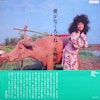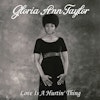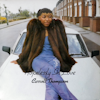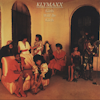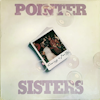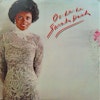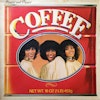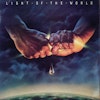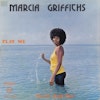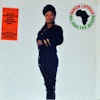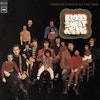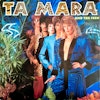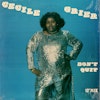Quentin Tarantino is a master of sampling, much like how producers such as the RZA or DJ Premier brought together seemingly disparate samples to create beats that revolutionized hip-hop. Tracking down the films that influenced Kill Bill Vols. 1 and 2, one of Tarantino’s most iconic films (in two parts), is like a never-ending quest to find all the samples used on a Bomb Squad production for Public Enemy. Kill Bill brought together the worlds of spaghetti westerns, kung fu films, and samurai cinema, but his biggest influence both visually and sonically for the film was a Japanese revenge thriller called Lady Snowblood from 1973. The film stars Meiko Kaji, whose character was the inspiration for Kill Bill’s O-Ren Ishii, played by Lucy Liu. The song that plays during the climactic fight scene in Kill Bill Vol. 1 where O-Ren Ishii clashes swords with the Bride (played by Uma Thurman) is “The Flower of Carnage” (Shura no Hana), which was the theme song for Lady Snowblood, and sung by Meiko Kaji herself. “Urami Bushi” (My Grudge Blues) is another song of Kaji’s that was featured prominently on the Kill Bill Vol. 2 soundtrack. Its eerie enka undertones symbolize the many dark characters that Kaji has played throughout her career. Enka, a distinctive style of minor-key Japanese music that has its roots in traditional folk songs but shot to popularity when it was crossed with the contemporary themes and instrumentation of the ’60s and ’70s, provided a perfect match for the outsider characters Kaji was associated with in her early work.
Researching Kaji’s career is like digging into a never-ending wormhole of Japanese cinema and music history. She got her start as a teenager in 1965 with the Nikkatsu film studio, and became most well known for the violent and highly sexualized Female Prisoner Scorpion and Stray Cat Rock series of exploitation films that were part of the “Pinky Violence” genre of movies that became popular in Japan in the 1970s (the name derives from the so-called “Pink”—or softcore porn—movies that took things a step further by adding a touch of stylized violence). The soundtracks for these films and her 1970s-era albums—such as Kaji Meiko No Hajiki Uta, Gincho Wataridori (Wandering Ginza Butterfly), and Yadokari—combined American psychedelic rock, funk, enka, and kayokyoku (Japanese pop), and would easily provide endless sampling fodder if they were in the hands of the right beatsmith.
Kaji was also featured in the classic yakuza film Battles Without Honor and Humanity: Deadly Fight in Hiroshima; but after taking some time off to visit New York in the ’80s, she started focusing on television and moved away from playing characters from the underworld. Now in her mid-seventies, she is still active as an actress, and released an album of rock music called Tsuioku in 2018 at the age of seventy-one.
She rarely grants interviews, so Wax Poetics was thrilled to be able to sit with her as she shares her history as an actress and singer, what it was like meeting Quentin Tarantino, and what keeps her motivated to keep on charting new territory as a performer today.

You joined the Nikkatsu film studio in 1965 and debuted as an actress in the film Kanashiki Wakare No Uta (Song of Farewell). Were you involved in music before that?
I joined Nikkatsu in 1965, and back then, any actors that starred in a movie had to sing the theme song of the film. I have been with the Teichiku record label for the past fifty-seven years, and they would release the soundtracks for the films that I appeared in. That’s how it worked out. So it wasn’t about me wanting to sing, or even if I was a good singer or not. Nikkatsu would tell me, “Hey, you’re going to sing the theme song,” and there was no room for me to say no. [laughs] It was basically an order from the studio. Back then, there were five major film studios—Nikkatsu, Toho, Toei, Daiei, and Shochiku, and they respectively owned their own movie theaters. Newer actors like me would get the opportunity to appear in smaller roles for films starring bigger actors. There would be movie theaters in cities across Japan that would ask us to make guest appearances onstage to promote the films. I was still a teenager, and I didn’t know anything about the business, and I was still struggling to learn my lines for films. But when the film studio would send me to these theaters to promote the films, they said that I should at least be able to sing a song or two onstage, since I wasn’t good at talking in front of people. When I’d arrive at the theater, there would be a full band onstage. They didn’t have karaoke back then like they do now. I had no idea what I should sing.
When we’d go to the Nikkatsu office, they would have boxes of sheet music from songs that were already released by more experienced actors. So I would go through these boxes to find songs that I could sing. I remember picking out the song “Kurutta Kajitsu” [Crazed Fruit] by Yujiro Ishihara to sing onstage. I had no experience in singing, so I had to choose songs that were easy for me to sing. So from my first year in the business, the film studio pretty much made me sing. The first record that I released on Teichiku was the theme song “Jingi Komori Uta” [Lullaby of Honor] from the film Kaidan Nobori Ryu [Blind Woman’s Curse]. That was my first music release in 1970.
Though you said you didn’t want to sing, a lot of overseas listeners are mesmerized by your powerful voice. Did the film studio have you take vocal lessons?
All I was thinking was, “I can’t sing,” but I couldn’t say that to them. When the film studio tells you to sing, it’s an order. You can’t say no. If you say no, they’re not going to give you any work. There were no vocal lessons, so I’m completely self-taught. So I just did the best that I could. And it’s considered an honor when a theater asks a new actor to go onstage and sing. Not all the actors get that opportunity. So I wanted to meet their expectations. I didn’t know how to sing, but I hate backing down from challenges, so that’s what kept me going. I never had a vocal teacher or took any vocal lessons. Singing at first was just painful for me, because I didn’t know what I was doing. But if I’m in front of a camera and I say, “I don’t know how to do this,” the staff would say, “You’re getting paid, you’re a professional now. Don’t ask questions, and just do it.” So in the beginning, singing was torture for me. [laughs]
Were there any singers that inspired you or that you looked up to?
My generation grew up listening to the Beatles. But I also loved Elvis Presley. When I got my first allowance, the first record I bought was “Love Me Tender” by Elvis Presley. It’s the song from his debut film. I loved Presley’s acting, but he was also a really great singer. After growing up, I got into listening to jazz and became a big fan of Ella Fitzgerald. I also love Edith Piaf.

You played very powerful female characters in the Female Prisoner Scorpion and Stray Cat Rock series of films, and I heard that you were heavily involved in developing the character yourself and also deciding on the costumes. What was your process?
To this day, I’ve never had a makeup artist or a stylist. I’ve been doing it all myself all these years, even now. When I was with Nikkatsu, a lot of the actors, including me, had to do our makeup by ourselves. Before the filming would start, the first thing we would do is have a group meeting and decide on our costumes. For the Female Prisoner Scorpion films, I was playing a prisoner in jail, so I had to figure out what I would be wearing in jail, and I also came up with the idea for the black dress in the ending. For me, developing a character starts with the costume. When I receive the script, I start thinking about what I should wear, how my hair should look, and what kind of makeup I should be wearing. Thinking about the costumes and the makeup is part of developing a character. After I decide on the costume and makeup, I’ll discuss it with the director and make the final decision.
Your black hat, coat, and dress, with your long hair in Female Prisoner Scorpion is very iconic. You came up with that outfit?
This might be hard to believe, but back then, two new films would be premiered each week. The film studios could do that because they owned the movie theaters. So after a week, a new film would be premiered. So about eight films would be premiered each month. The studios would really put the younger actors to work, so we’d be appearing in about five out of eight films a month. The reason why I came up with the long hair and black outfit was because that’s all I could manage. I didn’t have the energy to come up with anything else. [laughs] After a day of shooting, I would be so tired that I would shower and just go to bed. I only had about three hours of sleep each night. The Female Prisoner Scorpion series became a hit, so I just kept on going with that look.



Your movies and music have a following around the world now, but why do you think people from overseas are drawn to your work?
I don’t know the answer to that. When I was working on those movies and records, I wasn’t thinking about an international audience. I first wanted to be known in Japan. I sometimes get offers from other countries, but I love Japan, I love the Japanese language, and my mission is to express the essence of Japan. So I want to act in Japanese and sing in Japanese.
What are you thinking of when you’re singing?
I can’t read sheet music, so I memorize the melodies, and I approach the act of singing as if I’m acting. I’m not thinking about how well I can sing the song. [laughs] But that’s the only way I can really sing. When the songwriter presents the song to me, I will first memorize the melody. Then I will read the lyrics and imagine what type of character is being portrayed in the song. So it’s like I’m acting while I’m singing. That’s the only way I can really sing.
So you’re applying your acting skills to singing?
Yes. The most difficult part of acting is timing. When you’re acting, you have to find the right timing to say lines with the other actors. In music, you have to find the right timing with the notes. The melody has already been written by the songwriter, so it takes me time to find the right way to sing it. So I approach it as if I’m acting. Once I’ve memorized the melody and lyrics, I’ll interpret the lyrics in my own way and then sing the song.


Your ’70s films such as Female Prisoner Scorpion and Stray Cat Rock were very wild and psychedelic, but was Japan really like that during that era?
It was similar to the vibe you might see in American films like Easy Rider and Bonnie and Clyde. In the U.S., wounded soldiers were coming back from the Vietnam War, and Woodstock happened around that time. In Japan, we also had hippies, and many of them were involved in the anti-establishment protests that stemmed from the Anpo protests [against the Japan-U.S. Security Treaty]. The students back then had a lot of grit and were very hot-blooded. Hippie culture and anti-establishment protests were prevalent, so it was a lot different than the Japan I knew as a child. I debuted when I was seventeen, and I appeared in Stray Cat Rock when I was around eighteen or nineteen, but I didn’t really know why those people were protesting. But I could sense their rage. In Stray Cat Rock: Sex Hunter, the movie was about hunting “half-breeds.” Back then, half-Japanese kids were bullied in school, and it became a big social issue. So that became the theme of the film, but I couldn’t understand why they called the film Sex Hunter. [laughs] Director [Yasuharu] Hasebe wanted to portray the racism in Japan, and it became the most popular film of the Stray Cat Rock series. I had a friend in junior high who was half Japanese and she committed suicide. So it was a big social problem.

The thing that was great about Stray Cat Rock was that the film studio didn’t interfere with the making of the film. They didn’t say we couldn’t do this or that. Normally, the film stars would have a publicist from the studio following them around. Nikkatsu didn’t have high hopes for me, so I didn’t have a publicist; but Tetsuya Watari, who joined the studio at the same time as me, was really being pushed by the studio, so he had a publicist. We weren’t being watched by the studio, because they thought that our movie wasn’t going to do well in sales. So they didn’t say anything to us because the actors involved weren’t a priority for the studio, and we did what we wanted to. The theme of the movie might have gotten rejected if this film was a priority for the studio, but they didn’t say anything. So we had a lot of fun making the Stray Cat Rock series. How long do you think it took to film Stray Cat Rock?
I have no idea.
We filmed it in two weeks!
That’s amazing.
We didn’t have a budget or much time, but we had to make the film. The only thing the studio would say is, “Just finish the film. We need to show it in the theater.” So we had to complete it. We were still young, so we were able to make it happen. We would often stay up for three days straight without any sleep.


On the cover of the records for Gincho Wataridori from the 1972 film of the same name, and Kaji Meiko No Hajiki Uta, which included songs for Female Prisoner Scorpion, you have a very stern expression as if you were the character in the movie. Was this imagery decided by you, or was it decided by the record company?
Back then, when I would be interviewed, I would smile for the photographer, but the people from the magazine would say, “Please don’t smile.” The publicist from the studio would also agree and say, “Don’t smile.” When the reporter would interview me, and I would laugh while I would answer questions, the reporter would say, “I’m surprised you can laugh.” I would be like, “I’m a human too.” [laughs]
So the studio already had an image that they were trying to sell.
Yes. For Female Prisoner Scorpion, I told them that I didn’t want to have any lines, so I had to act using my eyes. The studio didn’t want me to smile in any of my photos, so I had to have a stern facial expression in those photos. It’s not like I was in a bad mood the whole time. [laughs] But that’s the only facial expression that photographers would want to photograph.
When you recorded the soundtrack for Gincho Wataridori, were you in character from the film as you were recording?
Definitely. For example, my character sings the theme song in the film, but the song was recorded after the filming process. Recording the song is the last part of the filmmaking process. After two weeks of filming, mentally I’m still in character, so I would go to the studio to record the song in that mindset. So when I’m recording my vocals, I’m still acting. I was in a film called Yadonashi [The Homeless, 1974], which was produced by Shintaro Katsu and also starred Ken Takakura. When I met Katsu-san at the time, I told him that I also recorded a new album and gave him the music. The next day, he told me, “You have a great voice. If you’re going to continue to sing, you should sing as an actor.” When he said that to me, I felt that what I had been doing was right. I’ll never forget what he told me.
The album Kaji Meiko No Hajiki Uta is a combination of enka and psychedelic rock. What was your approach to recording this album?
The creators of the songs had me in mind when they wrote the songs. When the fans have an image of you, they don’t want to listen to songs that diverge from that image. I would feel the same way as a fan of an artist. Fans need songs that fit the image they have of you. The songwriters were conscious of that image when they wrote those songs for me.
The lyrics for the song “Urami Bushi” were written by Shunya Ito, the director of the Female Prisoner Scorpion series, while the lyrics for “Shura No Hana” were written by Kazuo Koike, who wrote the Lady Snowblood manga, as well as Lone Wolf and Cub. What was it like working with them and recording these songs?
“Shura No Hana” was [composed] by Masaaki Hirao. When we started filming Female Prisoner Scorpion, it wasn’t decided that I would be singing yet. The director, Shunya Ito, apparently wanted me to sing. Before that, I was in the film Wandering Ginza Butterfly for Toei studios. The producer for both films are the same. In Wandering Ginza Butterfly, I’m singing the theme song, which was written by Kohan Kawauchi, and Mr. Ito saw that film. So that’s when he apparently got the idea to have me sing. He might have written the lyrics for “Urami Bushi” after that. When I got the script for Female Prisoner Scorpion, I told them that I would only appear in the film if I had no lines. I told them I won’t be in the film if I have to follow the script. It was director Ito’s debut film, but it took four months, which was a very long time to complete the movie. I don’t blame him, because the main actress suddenly tells him that she wants to stay silent during the movie and not say anything. [laughs] So after I told him that, he told me to give him some time, and he finally agreed to my terms, and came back saying that they can start filming. He said, “This is my debut film, and if it’s not a success, I’m going to get fired.” Then I told him, “That’s the same for me. If this film doesn’t succeed, it’s over for me too.” So he asked me, “I want to know how far we can go without having you say any lines. I’m not confident if this will work, so I want to shoot all the scenes in chronological order.” I’ve been in many films, but I’ve never heard of a film where the scenes were shot in chronological order. That’s because you have various factors to handle like juggling the schedules of all the actors, getting permission to shoot at different locations, and building sets. It was the first time for the team involved to shoot a film chronologically, which is why it took them so long to complete the film. But the film was a big success. After working on the film for four months, the director asked me to sing the theme song. I was so exhausted after four months of filming, and I was like, “I told you I don’t want any lines, and now you’re making me sing?” When I first heard this song, I thought it sounded more like enka to me, and I wasn’t confident that I could sing the song. Shunsuke Kikuchi was the composer for the film, and he composed “Urami Bushi.” I told him that I couldn’t imagine myself singing the song. He said I could ignore the melody that he wrote, and just sing it the way I wanted to. That really lifted the pressure off my shoulders, and I decided to sing the song as the character in the film. The director was also happy with that idea. So that was the approach I took on “Urami Bushi.” For anyone who knows music theory, they might say that the notes I’m singing are totally off. [laughs] When I sang “Flower of Carnage” [Shura no Hana] for Lady Snowblood [Shurayuki-hime], which was composed by Masaaki Hirao, he also told me, “You can sing it however you want to.” When we were in the studio, I sang it once, and then recorded right after that.
“Flower of Carnage” and “Urami Bushi” were used in Quentin Tarantino’s Kill Bill. How did you feel when you heard your songs being used in the film?
Three years before Quentin and his crew came to Japan, I received a call from Hirao-san [the songwriter for “Shura No Hana”] and he said, “Your songs are apparently going to be used in a Hollywood film. These are such old songs that I’m having a hard time finding the paperwork for them.” He asked me, “Are you okay with your songs being used in this film?” I told him, “If you’re okay with it, then I’m fine with it. I don’t know what kind of movie they are trying to make, but will my music work in a Hollywood film?” I was worried that my songs wouldn’t work in an English-language film. But he said, “Well, if they want to use it, it’s a good opportunity, so let’s just let them use it.” Then three years later, I saw Kill Bill and I was totally shocked. [laughs] I was invited to the premiere, and when I heard my songs in the film, I was like, “Wow, my song actually works in this movie.” The concerns I had were swept away, and it was such a nice surprise.




The story and style of Kill Bill were heavily inspired by your film Lady Snowblood; Lucy Liu’s kimono was also very similar to the one you wore in Lady Snowblood. What did you think of the film as a whole?
I was blown away by it. It’s a movie that brought so many diverse elements together. I was fascinated by how Tarantino interpreted elements from Lady Snowblood and turned it into an American movie. It’s a very intense film but very refreshing to watch.
A lot of the elements of the story and the way Tarantino shot the movie seemed to be inspired by Lady Snowblood.
An actor named Kazuki Kitamura was in Kill Bill, and I filmed a project with him. He told me that he played a role in Kill Bill, and I asked him what the filming process was like. Apparently, Tarantino wanted to shoot the film in Japan, but it was too expensive, so they went to Shanghai. He said that when he went to the studio in Shanghai, there was a TV screen at the entrance, and they were playing a video of Lady Snowblood all day. And Tarantino would say to the crew every day, “Watch this film.” When I met Lucy Liu, she said that she got sick of watching that film. [laughs] They were playing Lady Snowblood every day in the studio, and the crew had no choice but to watch the film. I love how Tarantino is open about what he’s influenced by. A lot of directors will act cool and not talk about their influences. But he openly talks about his love of Japanese films and how he was inspired by them. He remembers a lot of films that I was in, that even I forgot about. When I got to meet him, I was filming a TV drama series. Someone from his film company told me that Tarantino wouldn’t come to Japan to promote the film, unless I agreed to meet him. In the contract for promoting the film, one of the terms was that he had to meet me if he was going to come to Japan. I was busy filming, but I asked the producer of the TV series if I could take a day off to meet Tarantino. The producer happened to be a big fan of Tarantino, and he said that I should definitely go to meet him.
What did you talk about when you met Tarantino?
The first thing he said was, “Did you see Kill Bill?” [laughs] I shook his hand and sat down, and he didn’t let go of my hand until he left. He asked me what it was like filming Stray Cat Rock with Yasuharu Hasebe, and what it was like filming Battles Without Honor and Humanity: Deadly Fight in Hiroshima. He seemed to be curious about how we filmed on set back in those days. I don’t know how long it took him to film Kill Bill, but it must have taken him several years. I told him, “I’m honored you watched my films, but what is your process for creating films?” He told me, “It takes us two weeks to decide on costumes and have meetings, then it takes a couple of years to film.” I explained to him, “It took us two weeks to film our movies, including deciding on the costumes.” He was flabbergasted and became silent. It’s true though; that’s how long it took to film those movies. American movies use too much money.
You had a lot of sword-fighting scenes in Lady Snowblood. Was it challenging to work on that film?
Sword-fighting is physically very exhausting, and I had to do it wearing a kimono, which makes it even harder. It took me a while to get used to it. In Lady Snowblood 2, there’s a scene where I had to walk down a long flight of stairs and sword-fight at the same time. I really struggled with that scene.


On your album Yadokari, you fuse elements from American funk and rock with Japanese melodies, especially on the song “Hagure-bushi” [see Track 7 below], which is the theme from the Sengoku Rock Hagure Kiba TV series from 1973. How did this sound come about?
The word “rock” is in the title of the series, right? So the people who created that song [composed by Yuji Ohno with lyrics by Minoru Ohtani] wanted to make a song that had a heavy beat, and that was different from the kayokyoku and enka that I was known for. That series was a historical drama, but I was wearing a leather outfit and riding a horse. Yuji Ohno was in charge of the music for that series, and his idea to incorporate rock music really worked.
Your song titles can be quite shocking, like your song “Watashi Umarete Fushiawase” [I Was Born Unhappy] on the album Yadokari. Where did these ideas come from?
I don’t know, because the lyricists came up with those ideas. But one thing I can say is that being unhappy fits the image that people have of me. [laughs] Being unhappy doesn’t mean that I’m necessarily sad all the time. I like playing the outsider rather than being the honor student.
Did you have difficulty in showing your softer side in your music and acting?
It wasn’t that it was difficult, it was just back then, it wasn’t the right time to show that side of me, and it’s not what people wanted to see from me. I actually studied in New York City for about three months. I was thirty-five back then. I was starting to get tired of the image that I was playing. I was only getting work that fit that image, which was frustrating for me. I wanted to transform myself, but I didn’t know how to do it. As an actor, when you hit the age of thirty, you have to face the difficulty of getting older. I debuted as a teenager, and Female Prisoner Scorpion and Stray Cat Rock became hit movies when I was in my twenties. There was such a strong image that people had of me so I couldn’t get any work on TV. The Japanese entertainment industry places a lot of importance on image, but some people lose work because of that. So before I knew it, I was thirty-five, and I was wondering how I should approach my career since I was almost going to be forty. I had to figure out a new direction for myself. I decided to go abroad and cool off for a bit. The reason I went to New York was because I was in a film called The Love Suicides at Sonezaki [Sonezaki Shinju], which was directed by Yasuzo Masumura. The film got great reviews internationally, and we were invited to a film festival in Montreal. Then the Japan Society in New York also did a premiere of the film, and a lot of industry people and artists came to see it. The New York Times did a feature on the movie. That experience made me want to go to New York when I was thirty-five.
Back then in the ’80s, it must have been rare for a Japanese woman to go to New York to study on her own. What was that experience like?
If you compare Japan to New York, in New York you can be self-assertive and people won’t see it as being conceited. They’ll see you as having strong conviction and that you’re independent-minded. But in Japan, people see that as being arrogant. That’s one reason I was drawn to New York. I got a lot of inspiration being there. My views on acting and my beliefs completely changed after going there. The artists I met there had to overcome a lot of challenges and were very strong-minded. I met theater actors who were waiters, or selling flowers on the street, driving taxis when they didn’t have acting jobs. I didn’t think I had a chance in competing with people like that in New York. I realized how privileged I was. Back in Japan, I never had to sell flowers or be a waiter, and I could just focus on acting. I would turn down jobs if I didn’t like a project, but I still had opportunities to sing and act. I realized how privileged I was and that I had become cocky. So it was humbling to go to New York for three months, and I learned a lot. I changed after that. After I came back to Japan, I figured that the best way to change the course of my career was to act on television. Luckily, I got an offer to be in a TV drama from a producer. The role was to play a mother who had a live-in job at a local bakery. The producer thought that I would turn down the offer, but I wanted to apply what I had learned in New York. If I had turned down that offer, I might not be here today. The producer said, “You probably need to experience a role like this. You can act at any age, but you need a role like this to change.” In the past, I would have probably turned down that offer, but I got the offer right after coming back from New York. By playing that role, I started getting different types of acting jobs. It was a turning point in my career. I’ve been playing roles in TV dramas ever since, and I just had a role in a feature film after several decades of being on TV. I believe that the world of television really taught me about acting. If it weren’t for TV, I wouldn’t be acting today. I’ve pretty much played any type of person there is in the world. I haven’t played a teacher or public prosecutor yet, but I’ve played a lawyer, a cop, and everything in between. As an actor, I learned about the importance of playing diverse roles, and also about longevity in the business. It’s great to be able to challenge myself with new roles as I get older.
Your album Sareyo Sareyo Kanashimi No Shirabe from 1974 has a very different sound from your previous, darker records and is much more upbeat. What made you want to change your sound?
I recorded that album before I went to New York. I love that album because it was different than Hajiki Uta and songs like “Urami Bushi.” It was refreshing for me to record that album. I asked the producer why he chose this sound, and he said, “You actually sound like this when you’re not acting.” I was surprised that he saw me that way, because it’s hard to know how people perceive you. He said that this was my natural sound, and I went with it.
In 2018, you released Tsuioku, which was the first album you released in forty-three years. The producer of the album was Shinichiro Suzuki, who is actually the son of Masakatsu Suzuki, who produced your albums over forty years ago.
Masakatsu Suzuki was the one who produced Sareyo Sareyo Kanashimi No Shirabe. Back then, he had just married and had a child when we recorded that album, so I knew Shinichiro when he was a baby. Shinichiro still has a photo that we took together when he was a baby. [laughs] After forty-three years, he had become a great singer-songwriter, and he brought the Tsuioku album to me saying that “I know the sound that my father created for you, but this is the sound I want to create for you.” It was a touching moment. He asked me to sing rock music at the age of seventy-one. [laughs] The album has twelve songs, but we finished recording the album in one hour and eighteen minutes. We did a new rock version of “Urami Bushi” that Shinichiro arranged, and I love this version. In the studio, he said we should start off by recording “Urami Bushi,” since I was used to singing it. So I sang it thinking it was a test recording, and after I sang it, he said, “I got goose bumps listening to you, so you don’t need to do another take.” So most of the songs were one-take recordings. Otherwise, we wouldn’t have finished recording in one hour and eighteen minutes. We completed the album really quickly. When we performed live, Shinichiro put together the band, and we got a great response. I didn’t lose my voice until the end, which surprised people. During the recording, I didn’t lose my voice either. In acting, if you do too many takes, you lose the energy. Usually the first take is the best one. But as actors, we can’t say that.

You’ve accomplished so much, but what keeps you motivated to keep on acting and singing?
I don’t think of myself as an especially motivated person, but when I quit the Nikkatsu studio, I knew that I had no one to protect me anymore and that I would be on my own in the industry. I knew that for every project I get asked to work on, if I don’t do a good job on it, then I might not get called again. I’ve never forgotten that. There’s no security in this industry, so even if it’s a big or small role, it doesn’t matter. Whatever job I get, I just do my best on it. I don’t ever say, “I don’t want to do this role.” Because you never know what that role might lead to. Whatever job I get, I just try to work on it as sincerely as I can. After that, if you don’t get called back, then you can’t do anything about it. But if you don’t get called back for a job, it’s honestly frustrating. So if I work on a project, I’m a professional, so I’m doing the best I can so I get the call back. People ask me, “Why didn’t you get married?” Honestly, I didn’t have time to think about that. When I was in hit movies, I had a boyfriend and we were engaged. Just as I was about to get married, it didn’t work out. Since then, I haven’t thought about getting married, and I know how difficult it is to live alone. After leaving the Female Prisoner Scorpion series, I hit rock bottom. I left for my own selfish reasons, so I couldn’t do anything about it. I left because I knew that if I waited until my popularity declined and started to get less work, I wouldn’t be able to bounce back. So I told them that I wanted to quit the series, because then I could withstand any hardships while I still had the energy. I’m stubborn in a good way. [laughs] Early on, singing was painful to me, but I’ve been with Teichiku for fifty-seven years, and during that time, CDs and LPs are no longer the main ways people listen to music. Now it’s all about digital streaming. I’m honored that I’ve been able to continue singing for so many years. I’m grateful to Teichiku for saying that they wanted to release my music digitally. Even if I want to do something, if there’s no demand for it, then I can’t do it, so I’m glad I have this opportunity.
Your albums have now been released by Teichiku on streaming platforms, so a new generation of fans can enjoy your music. What do you think of this?
I’m curious what they think of my old albums, but I also want to know what they think of a woman in her seventies singing rock. [laughs] I really want to perform live more. The energy I get when I sing really keeps me going. So I never really think about my age.
What are your upcoming plans for new projects? Are there any new things you want to challenge yourself with?
Whether it’s singing or acting, people have always asked me, “Would you be interested in trying this?” I’m not the type of person that really knows what is best for me. So if a producer says, “Can you try acting this part?” or “Can you try singing this?” I’ll think, “Oh, so that’s how they perceive me.” When I recorded the Tsuioku album, Shinichiro Suzuki wrote all the lyrics, and they all express a part of me. Some songs are strong and energetic, some songs are sad, some are scary, but Shinichiro saw those sides of me, and put them in the songs. I’m filming a project now, which I can’t talk about yet, but all I can say is that it should be a fun surprise for everyone. [laughs]
You collaborated with Cande y Paulo from Argentina on a cover of your song “Shura no Hana.” How did that happen? Do you have plans to work with other overseas artists?
I don’t really have any plans to work with other people, but I was so surprised when they reached out to me. It was about two years ago when they contacted me, and they said they wanted to sing “Shura no Hana.” I thought they wanted me to sing it in Spanish, so I was really worried if I could do it, but the singer of the group sang it in Japanese. I was so honored that she sang it in Japanese, and she has such a beautiful and gentle voice. She became a fan of me through Kill Bill, and I love how she interpreted the lyrics in her own way. When they sent the track to me, I was in tears. Japanese is a difficult language, and plus, she is singing it, so I could only imagine how challenging that was for her. The album was released by Decca Records in the U.K., and it was released around the world, so it must have been a surprise for some listeners.
Do you have a final message for your fans around the world?
My career as a singer started at the same time I started acting, which is fifty-seven years ago. I’ve recorded over one hundred songs during my career, and eighty-five of those songs have been released digitally. I’m filled with so much gratitude that people listen to my music, and I’m hoping that a lot of people get to listen to my music. The world has been struggling with the pandemic, but I hope that my music brings some healing to the world. Maybe my music won’t bring too much healing. [laughs] But I’m happy that my music is available digitally, and that people around the world will get a chance to listen to it. I’ll keep on going until I can’t move, so I’ll still be active for a good ten years. Thank you for your continued support!
